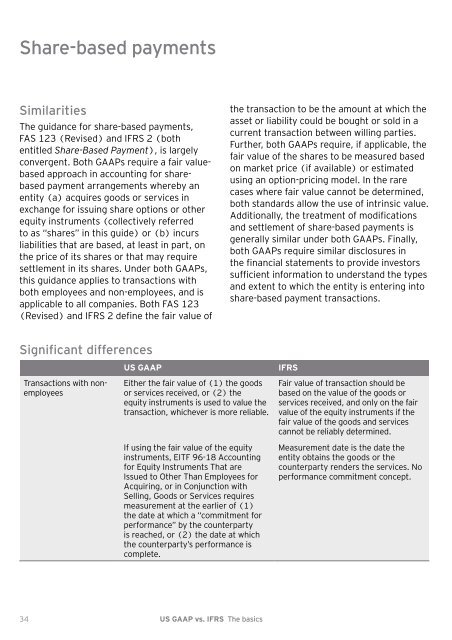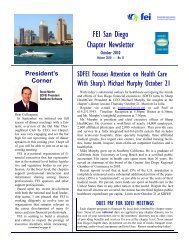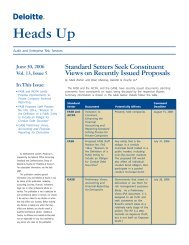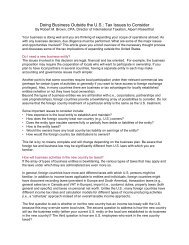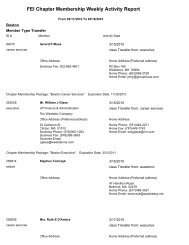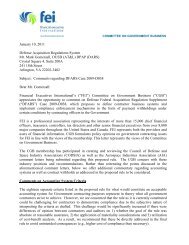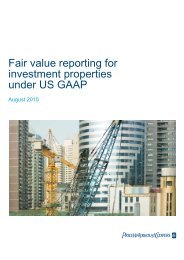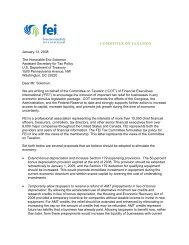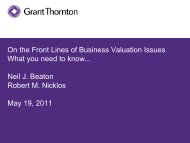US GAAP vs. IFRS The basics - Financial Executives International
US GAAP vs. IFRS The basics - Financial Executives International
US GAAP vs. IFRS The basics - Financial Executives International
You also want an ePaper? Increase the reach of your titles
YUMPU automatically turns print PDFs into web optimized ePapers that Google loves.
Share-based payments<br />
Similarities<br />
<strong>The</strong> guidance for share-based payments,<br />
FAS 123 (Revised) and <strong>IFRS</strong> 2 (both<br />
entitled Share-Based Payment), is largely<br />
convergent. Both <strong>GAAP</strong>s require a fair valuebased<br />
approach in accounting for sharebased<br />
payment arrangements whereby an<br />
entity (a) acquires goods or services in<br />
exchange for issuing share options or other<br />
equity instruments (collectively referred<br />
to as “shares” in this guide) or (b) incurs<br />
liabilities that are based, at least in part, on<br />
the price of its shares or that may require<br />
settlement in its shares. Under both <strong>GAAP</strong>s,<br />
this guidance applies to transactions with<br />
both employees and non-employees, and is<br />
applicable to all companies. Both FAS 123<br />
(Revised) and <strong>IFRS</strong> 2 define the fair value of<br />
Significant differences<br />
Transactions with nonemployees<br />
<strong>US</strong> <strong>GAAP</strong> <strong>IFRS</strong><br />
Either the fair value of (1) the goods<br />
or services received, or (2) the<br />
equity instruments is used to value the<br />
transaction, whichever is more reliable.<br />
If using the fair value of the equity<br />
instruments, EITF 9 -18 Accounting<br />
for Equity Instruments That are<br />
Issued to Other Than Employees for<br />
Acquiring, or in Conjunction with<br />
Selling, Goods or Services requires<br />
measurement at the earlier of (1)<br />
the date at which a “commitment for<br />
performance” by the counterparty<br />
is reached, or (2) the date at which<br />
the counterparty’s performance is<br />
complete.<br />
3 <strong>US</strong> <strong>GAAP</strong> <strong>vs</strong>. <strong>IFRS</strong> <strong>The</strong> <strong>basics</strong><br />
the transaction to be the amount at which the<br />
asset or liability could be bought or sold in a<br />
current transaction between willing parties.<br />
Further, both <strong>GAAP</strong>s require, if applicable, the<br />
fair value of the shares to be measured based<br />
on market price (if available) or estimated<br />
using an option-pricing model. In the rare<br />
cases where fair value cannot be determined,<br />
both standards allow the use of intrinsic value.<br />
Additionally, the treatment of modifications<br />
and settlement of share-based payments is<br />
generally similar under both <strong>GAAP</strong>s. Finally,<br />
both <strong>GAAP</strong>s require similar disclosures in<br />
the financial statements to provide investors<br />
sufficient information to understand the types<br />
and extent to which the entity is entering into<br />
share-based payment transactions.<br />
Fair value of transaction should be<br />
based on the value of the goods or<br />
services received, and only on the fair<br />
value of the equity instruments if the<br />
fair value of the goods and services<br />
cannot be reliably determined.<br />
Measurement date is the date the<br />
entity obtains the goods or the<br />
counterparty renders the services. No<br />
performance commitment concept.


